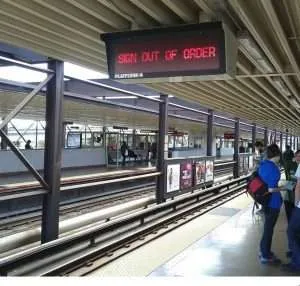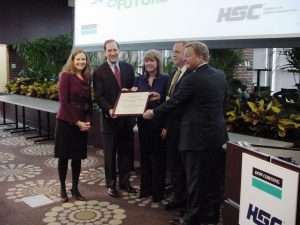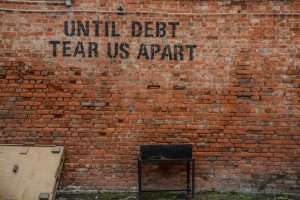During the Hurricane Harvey disaster, many reporters and commentators seemed to assume that federal agencies had to take the lead in rescuing the city. And even before water levels had receded in Houston, federal politicians were promising billions of dollars in aid.
However, the large-scale federal intervention in natural disasters we saw during and after Katrina, Sandy, and Harvey is a relatively recent phenomenon. Prior to recent decades, the private sector handled much of the nation’s disaster response and rebuilding. The US military and National Guard have long played important roles during natural disasters, but private charitable groups and businesses have been central to disaster response and rebuilding throughout US history.
In this essay, I discuss the responses to various natural disasters in the past. The 1906 San Francisco earthquake and fire and the 1913 Great Easter Flood illustrate the impressive outpouring of private-sector support during past calamities.
The 1906 San Francisco Earthquake and Fire
San Francisco was struck by a massive earthquake and fire in 1906 that destroyed 80 percent of the city and killed about 3,000 people. At least 225,000 people out of about 400,000 in the city were left homeless, and 28,000 buildings were wrecked.
Voluntary aid poured in from around the country.
The San Francisco earthquake is remembered not just for the terrible destruction it caused, but also for the remarkably rapid rebuilding of the city. More than 200,000 residents initially left the city, but the population recovered to pre-quake levels within just three years, and residents quickly rebuilt about 20,000 buildings.
The private sector response to the disaster was extremely impressive. Voluntary aid poured in from around the country. John D. Rockefeller, Andrew Carnegie, and W.W. Astor, for example, each donated $100,000. Charitable groups, including the Salvation Army and the Red Cross, played a large role in relief efforts. The health care and home-products company Johnson and Johnson quickly loaded rail cars full of donated medical supplies and sent them to San Francisco.
The insurance industry was crucial to the rebuilding. About 90 percent of San Francisco residents had fire insurance from more than 100 different companies. The companies ended up paying out a massive $225 million in claims, which was equal to what the entire US insurance industry had earned in profits in the prior four decades. Insurance payouts totaled about 90 percent of what was owed, as only a relatively small number of companies failed.
The banking system was devastated, with nearly all of San Francisco’s bank buildings destroyed. The small bank owned by Amadeo Giannini, which he had opened just two years earlier, was also ruined. But Giannini was able to rescue his gold and securities, and the next day he opened for business on a wharf on the San Francisco Bay. His rapid response and willingness to provide loans to all types of people after the disaster helped him gain the respect of the city. His bank would eventually grow to be one of the largest in the nation, the Bank of America.
Citizens formed the “Committee of 50,” which was credited with a very organized and effective disaster response.
Another impressive story is that of the Southern Pacific Railroad, which immediately swung into action and provided free evacuation for more than 200,000 city residents to anywhere in the country. Within five days of the earthquake, the company had filled 5,783 rail cars with passengers leaving the city. Southern Pacific president Edward Harriman made disaster response the highest priority of his rail network. Only one day after the earthquake, the first of his rail cars full of emergency supplies left Omaha for San Francisco. Harriman personally donated $200,000 to relief efforts.
What about the government response to the San Francisco conflagration? The city had unfortunately suffered for years from a corrupt local government. The good news was that in the immediate aftermath of the earthquake, leading citizens formed essentially a new city government called the “Committee of 50,” which was credited with a very organized and effective disaster response. For its part, Congress appropriated just $2.5 million for relief to San Francisco, or about $50 million in today’s dollars.
The main federal organization that responded was the US Army, which moved quickly to take control of the city and provide water, food, tents, and other relief items. Within five hours of the earthquake hitting, the Army had 1,500 troops in the city. Some of the actions of the Army were controversial, but the swift response by the commander of the nearby Presidio base is an example of how local resources and local decision-making are crucial in the aftermath of disasters.
The 1913 Great Easter Flood
The Great Easter Flood in 1913 ravaged a huge area in one of the most widespread and damaging disasters ever to strike the United States. High winds and massive flooding caused destruction and more than 1,000 deaths across 14 states from Vermont to Alabama. The US military aided with relief operations, and the National Guard was mobilized in numerous states. Americans responded with huge contributions to the Red Cross and other charitable organizations aiding victims.
On its peak day, NCR’s kitchens provided meals for 83,000 flood victims.
Ohio was the hardest hit state, and Dayton probably the hardest hit city. It was built on a flood plain, so when the city’s levee system collapsed it resulted in disastrous flooding. Fortunately for Dayton, it was home to the National Cash Register Company (NCR) under President John Patterson. Seeing the flood disaster that was about to happen, Patterson seized the initiative and NCR become the central funder and organizer of relief in the city.
NCR built 300 boats to rescue flood victims, organized search teams, and provided meals and shelter for thousands of people. On its peak day, NCR’s kitchens provided meals for 83,000 flood victims. NCR headquarters also became the base of operations for the Red Cross and Ohio National Guard.
John Patterson was an interesting leader. He instituted innovative and enlightened management practices, such as providing a wide range of recreation and medical amenities for workers. But he was also an aggressive businessman, and he and other NCR executives were found guilty of violating federal antitrust laws just weeks before the flood, although this was reversed on appeal. NCR’s leaders apparently saw a chance to redeem themselves in the eyes of the community, and their remarkable efforts to save their city during the flood gained them national praise.
Historian Trudy Bell has written in detail about the 1913 disaster. One of her findings is that there were widespread refusals of aid by affected individuals and communities, apparently because of cultural norms at the time regarding personal pride and the belief in standing on one’s own feet. Some people and communities even gave back unused amounts of aid that they had received after the disaster. These days, sadly, the situation is the reverse: there is usually a large amount of fraud in relief programs in the wake of disasters.
Reprinted from Cato Institute.




